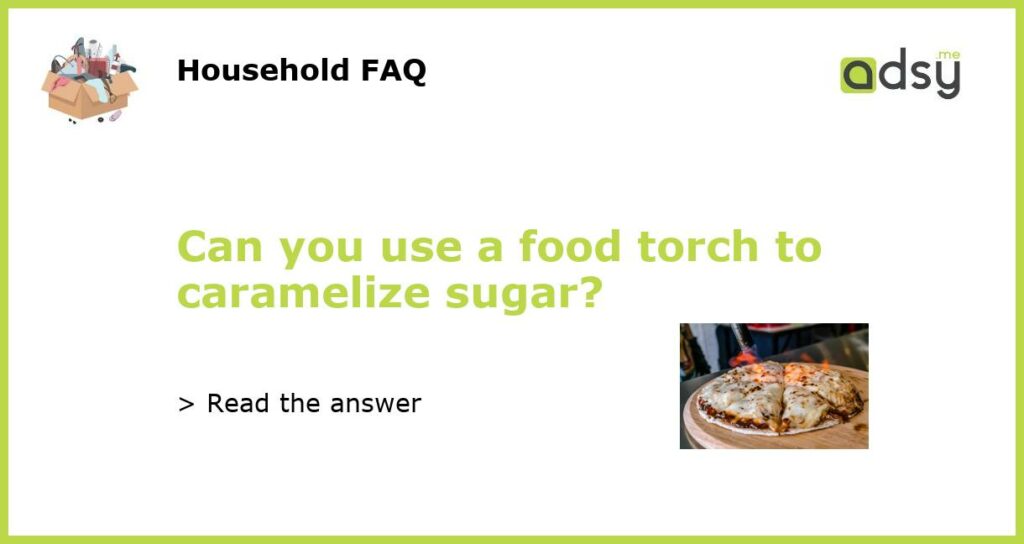What is a food torch?
Before understanding if you can use a food torch to caramelize sugar, it’s essential to know what a food torch is and its uses. A food torch is a handheld tool that uses flammable gas to produce a hot flame that is hotter than a regular lighter or matchstick. It helps in cooking dishes such as creme brulee, caramelizing sugar, searing meats, and more.
How does sugar caramelization work?
Caramelizing sugar involves heating granulated sugar slowly until it melts, browns, and produces a rich, complex flavor. Heating sugar activates the enzyme reactions that turn the sugar into caramel. The process involves removing any excess water from sugar, breaking its molecular structure, and producing new compounds and aromas.
Can you use a food torch to caramelize sugar?
While food torches are great for searing meats or adding an extra crust to your creme brulee, they’re not the best tools for caramelizing sugar. The heat produced by food torches is not hot enough to melt and brown sugar evenly. Additionally, torches produce a small concentrated flame that can quickly overcook one area of sugar while leaving other parts untouched, leading to an uneven texture and taste.
Best tools for sugar caramelization
So, what are the best tools for caramelizing sugar? The most popular method is stovetop caramelization. This method involves heating a pan on low to medium heat, adding sugar, and stirring it continuously until it turns brown. A saucepan or frying pan is ideally used for this process. Another method is broiling, which involves adding caramel on top of your dish, such as cheesecake, and placing it under a broiler for a few minutes until the sugar melts.
Conclusion
While food torches are great for adding that extra pizzazz to your dishes, they’re not the best tools for caramelizing sugar. Instead, stovetop caramelization or broiling is the best method for achieving evenly browned, perfectly caramelized sugar.






